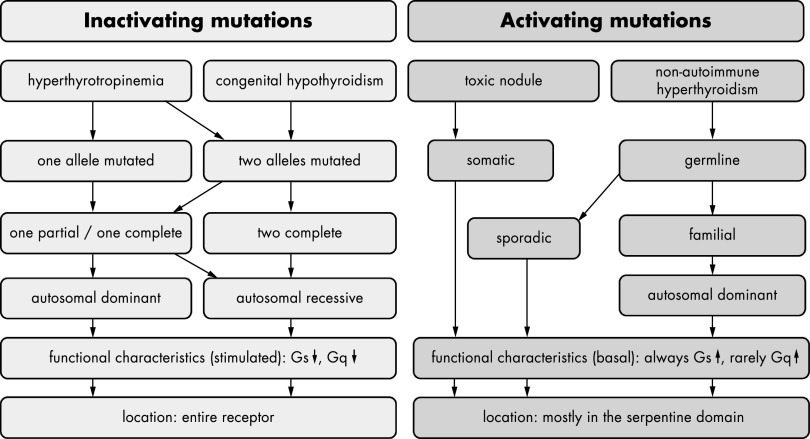Figure 2.
Characteristics of inactivating and activating TSHR mutations. Phenotypic and functional implications of naturally occurring inactivating mutations are indicated in light gray. Such mutations were identified in patients suffering from hyperthyrotropinemia or congenital hypothyroidism. In the case of hyperthyrotropinemia, these mutations are either located on one (dominant inheritance) or on both alleles (recessive inheritance). In patients suffering from congenital hypothyroidism, mutations are located on both alleles. The mutations leading to congenital hypothyroidism (mostly investigated in heterologous overexpressing systems) are either complete loss-of-function mutations on both alleles or one complete loss-of-function mutation combined with a partial loss-of-function mutation. This combination of functional properties was also found in patients suffering from hyperthyrotropinemia; however, in that condition, the mutations are mostly partial loss-of-function mutations. The term “functional characteristics” refers to signaling properties after TSH simulation that resulted in a reduction of TSH-stimulated functionality. Inactivating mutations have been found in all receptor parts. Phenotypic and functional properties of activating mutations are indicated in dark gray. These mutations could occur either as somatic or as germline mutations. Germline mutations either are sporadic or were found as familial cases and were inherited in an autosomal dominant manner. Activating mutations are always characterized by an enhanced basal Gs signaling; a few mutations also show enhanced Gq signaling.

